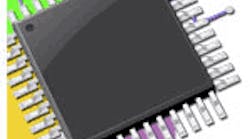Designers will get the opportunity to test their devices against the IEEE 1588-2008 Precision Time Protocol standard at the next University of New Hampshire InterOperability Laboratory (UNH-IOL) plugfest, scheduled for Sept. 27-29 in Durham, N.H. The event will be held in association with the 2010 International IEEE Symposium on Precision Clock Synchronization for Measurement, Control and Communication set for Sept. 29 to Oct. 1 in Portsmouth, N.H.
The UNH-IOL established the IEEE 1588 Consortium in May, giving members access to a comprehensive test bed that supports the entire spectrum of profiles under the IEEE 1588-2008 standard and cost-effectively and efficiently ensuring interoperability. In conjunction with the IEEE, the UNH-IOL’s expert staff has developed a conformance test suite and two interoperability suites for the latest version of the standard, which are available to consortium members.
Like all UNH-IOL consortia, the UNH-IOL IEEE 1588 Consortium has been designed to work closely with member companies to reduce time-to-market, create cost-effective solutions, and be more comprehensive than in-house testing solutions. New Ethernet switches, network interface cards (NICs), and routers are among the products that will be tested.
One of the main issues with adopting low-cost, ubiquitous Ethernet in networking applications is its inherent lack of a deterministic transmission pattern. As a result, time-critical operations conducted over a network are seriously compromised. In many applications, such non-deterministic characteristics completely eliminate the consideration of Ethernet as a networking solution.
The IEEE’s 1588 Precision Time Protocol standard basically solves this problem, opening the door to increased Ethernet adoption in time-critical applications. The standard is implemented by a combination of hardware and software in networking equipment such as switches. It requires the use of a grand master clock usually derived from GPS for its timing precision.
As use of Ethernet became increasingly widespread in networked measurement and control systems, an alternative to existing protocols that could increase the accuracy of clock synchronization while minimizing the cost of implementation was required. The 1588 standard, originally published in 2002 and revised in 2008 as IEEE 1588-2008, allows a variety of industries including telecommunications, industrial automation, power transmission, test and measurement, and consumer electronics to increase timing accuracies, minimize network administration and resources, and adapt to low-cost and low-end devices.
The IEEE 1588 standard, or Precision Time Protocol, was originally developed for networked measurement and control systems to provide a low-cost yet highly accurate way to handle time-sensitive applications efficiently. A successful example is the use of 1588 in LXI Ethernet-based test systems for time-stamping measurements. The latest version, ratified in 2008, supports large redundant networks such as power grids and high-performance telecommunication applications.
While version one of IEEE 1588 has been widely adopted in industrial automation and test and measurement applications, version two has been updated for telecommunications (particularly in the mobile backhaul and in the use of femtocells, thanks to the growing popularity of devices such as Apple’s iPhone), the power transmission industry where reliable and even power transfer is critical, and in consumer electronics.
Continue to next page
IEEE 1588 defines several profiles for particular use cases. The standard saw its first use cases in industrial automation, satisfying the timing and speed requirements of multi-axis robotics and of any communications or control environment where small discrepancies in timing could cause cascading effects in the manufacturing process. These precision control requirements also carry over into profiles defined for the power transmission industry, particularly for communication with power nodes and substations in a Smart Grid or micro-grid system.
For telecommunications, this revision of the standard addresses the time synchronization needs of carrier class Ethernet, incorporating the jitter and wander requirements specified by the International Telecommunications Union (ITU). As the mobile backhaul undergoes the migration to multiprotocol label switching (MPLS) and carrier Ethernet, clock synchronization must be maintained between radio and network interfaces to ensure the seamless handoffs of calls. IEEE 1588 addresses this with the added benefit of the reduced costs that packet-based solutions provide.
In the consumer electronics space, packet-based synchronization has direct applications to bridged local area networks that carry data-heavy, error-sensitive audio and video data between devices in the home. The synchronization benefits of IEEE 1588 also have applications in the professional audio and video markets, such as studio productions, stadium and concert productions, and public address systems.
Founded in 1988, the UNH-IOL provides independent, broad-based interoperability and standards conformance testing for data, telecommunications, and storage networking products and technologies. Combining extensive staff experience, participation in standards bodies, and a 32,000-square foot facility, the UNH-IOL helps companies efficiently and cost-effectively deliver products to the market.
As an independent organization, the UNH-IOL is committed to neutral testing of open standards technology. Its plugfests allow participating companies to test their devices and identify interoperability issues early, speeding go-to-market time for products. The UNH-IOL also offers a variety of testing programs, or consortiums, representing a collaboration of industry leaders in network equipment, test equipment, and industry forums, as well as service providers. Working together, the participants can decrease research and development and quality assurance expenses, reduce product time-to-market, and drive the industry acceptance of a technology.
